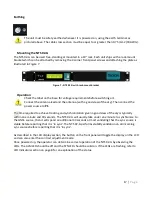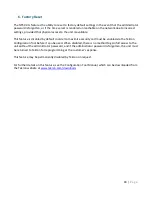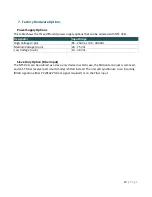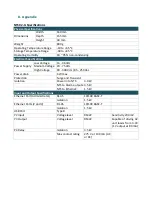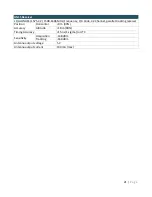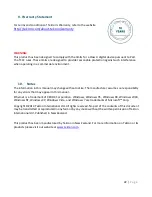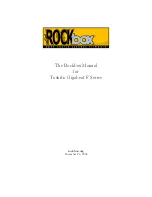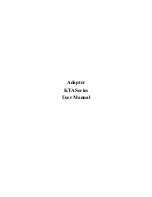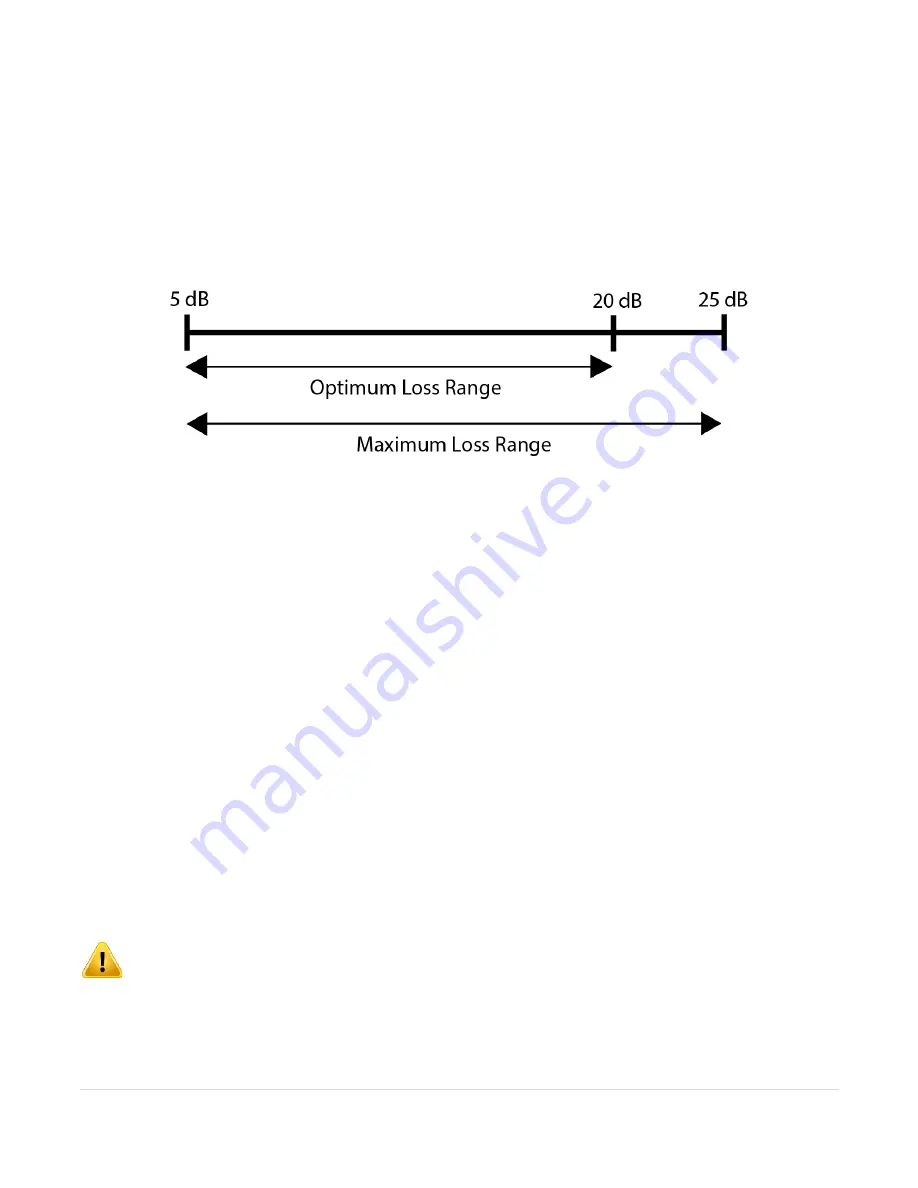
12 |
P a g e
Antenna Cable Considerations
The NTS 02-G antenna port expects a signal with a gain of at least 15 dB, and no more than 35 dB, with
20 - 35 dB being the optimal gain range.
All antenna cables will introduce some signal loss in the antenna installation system, which will be
dependent on cable length. The total gain of the antenna installation should fall within the ranges
specified below. The total gain is calculated by the gain of the antenna (Tekron supplied antenna
provides 40 dB gain) minus the antenna cable loss.
Figure 4 - Recommended antenna cable loss range
Note
: The above figures are based on an average GNSS signal strength of -130 dBm at sea level, and
assumes that the Tekron supplied antenna is used.
CNT-240
32.8 dB/100 m (10dB/100ft). Plus 1 dB/connector
Approximate optimum length range: 15m to 60m
(50 ft – 197 ft)
Approximate maximum length range: 15m to 76m
(50 ft – 250 ft)
CNT-400
16.73 dB/100 m. Plus 1 dB/connector
Approximate optimum length range: 30m to 120 m
(99 ft – 394 ft)
Approximate maximum length range: 30m to 150m
(99 ft – 493 ft)
A lightning protection device should be inserted into the antenna lead. A suitable device, complete
with additional cable connectors, a connector crimping tool, and mounting hardware is available as an
option. The introduction of the lightning protector introduces an additional loss of 0.1 dB and the loss
of two connectors.
Care should be taken to ensure that the connector is not cross threaded when attaching the
antenna lead-in cable. The connector should be tightened firmly by hand only. DO NOT OVER
TIGHTEN!

















